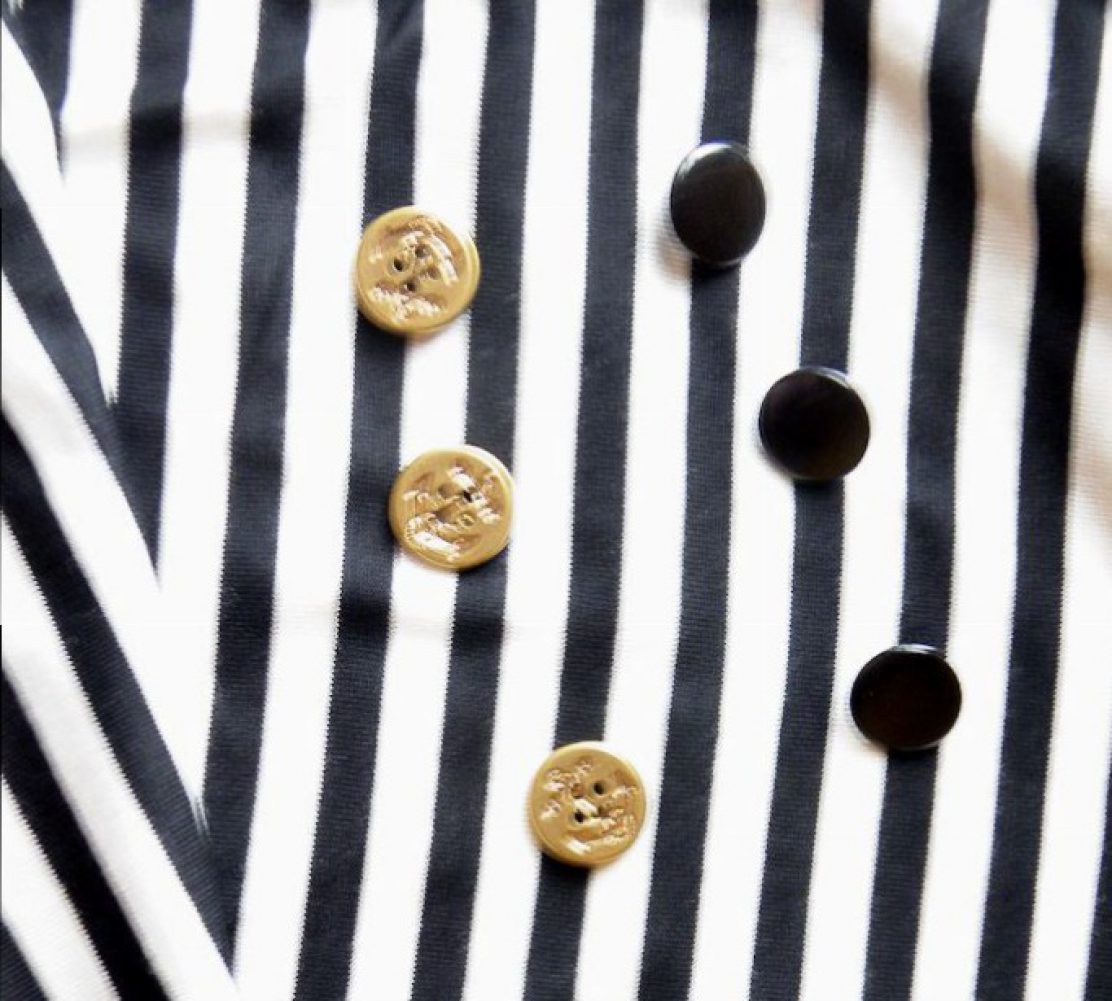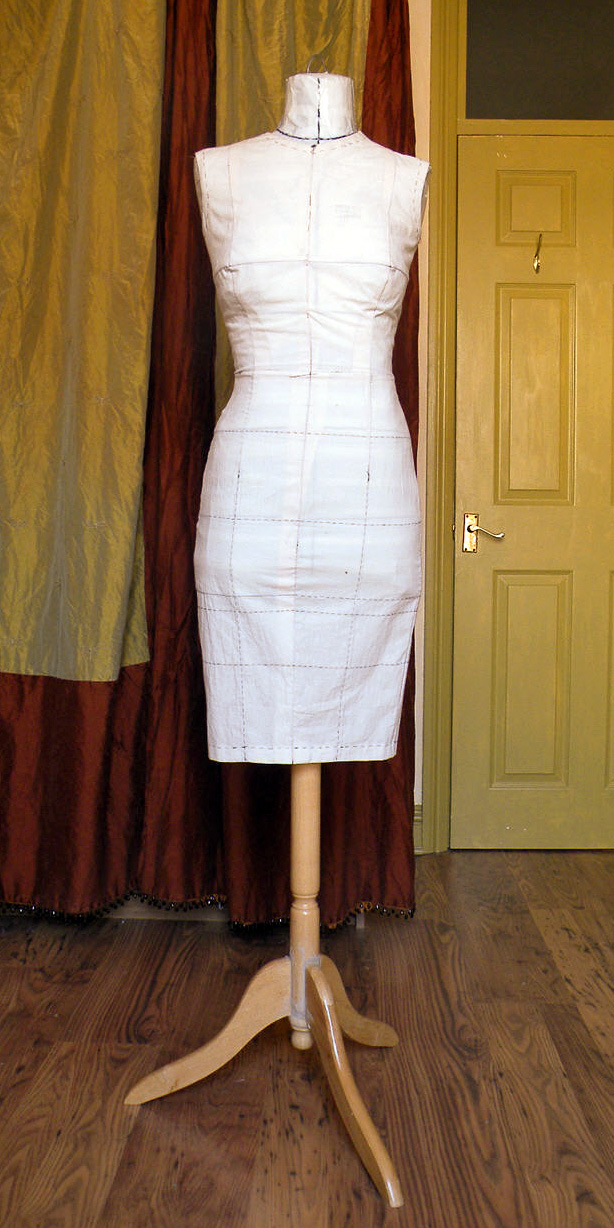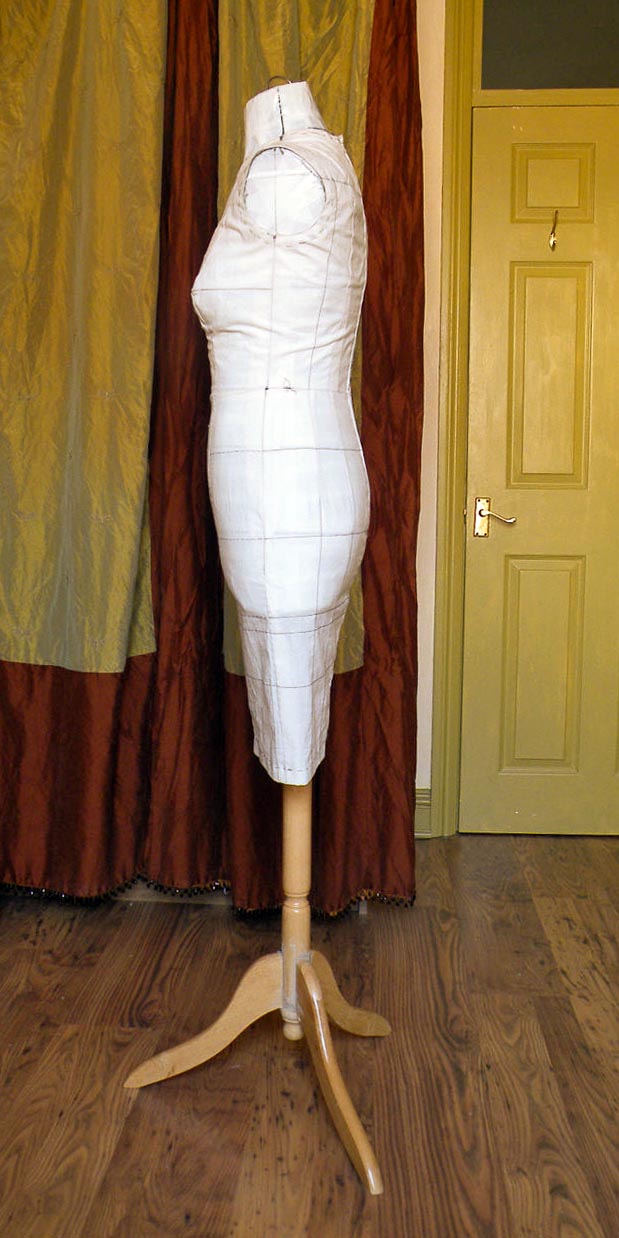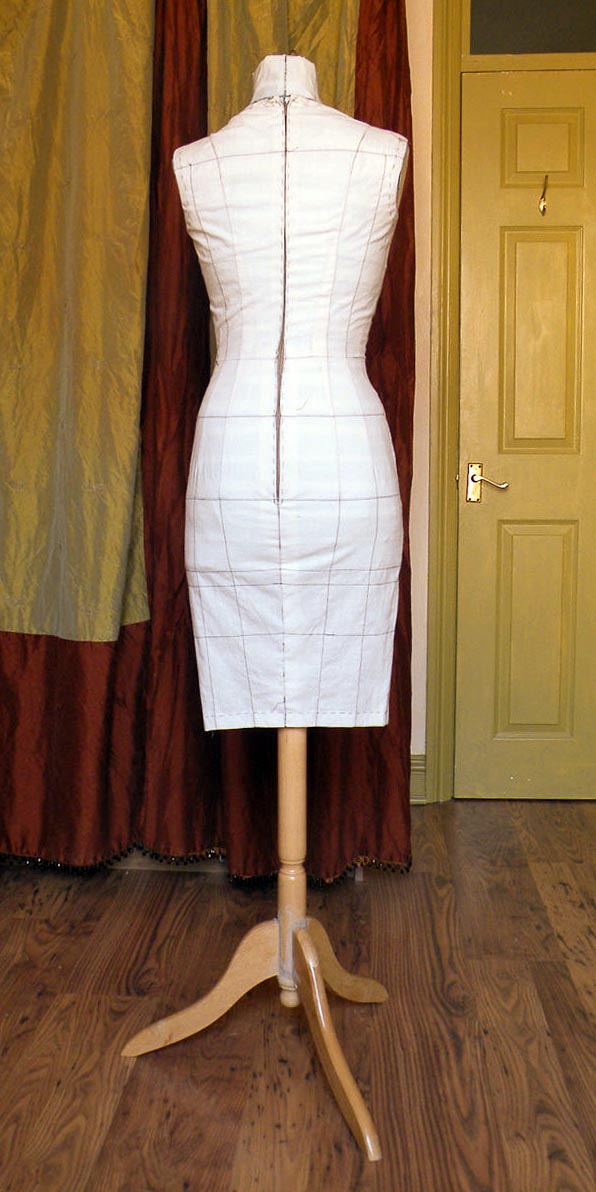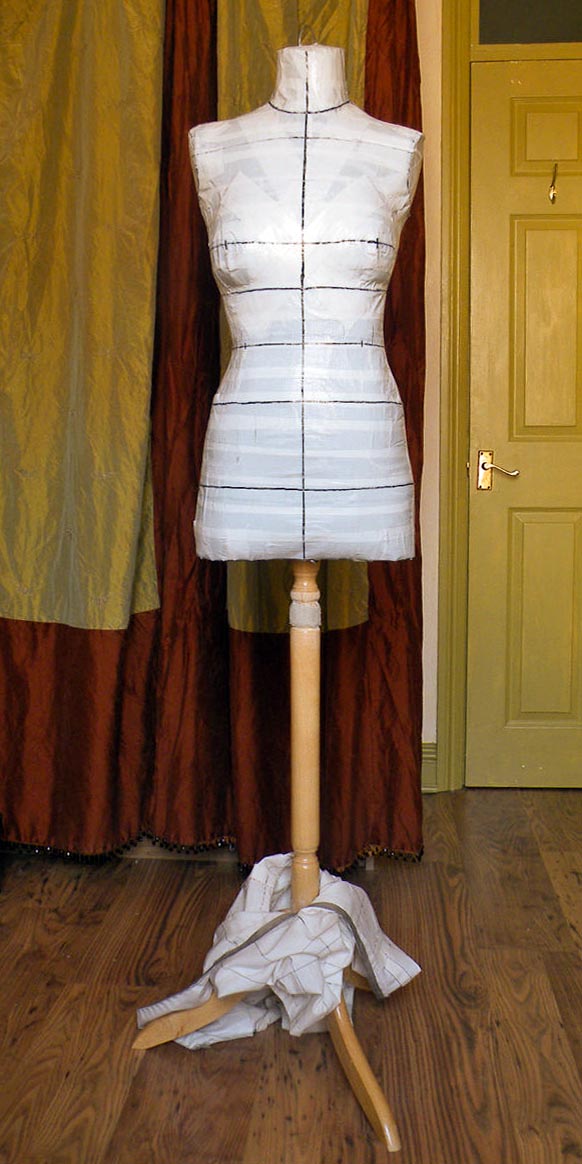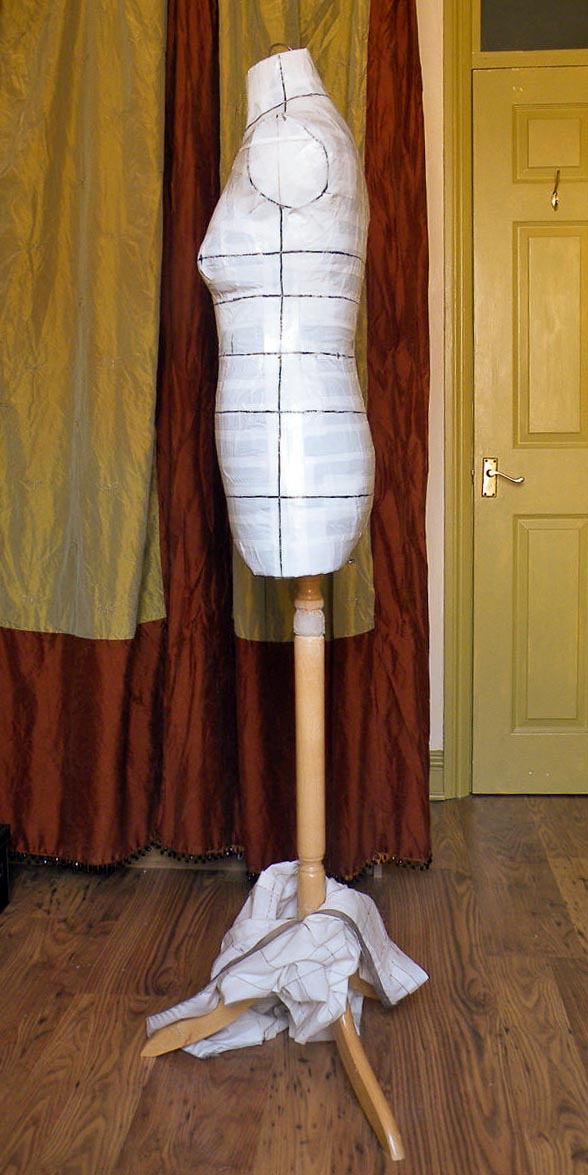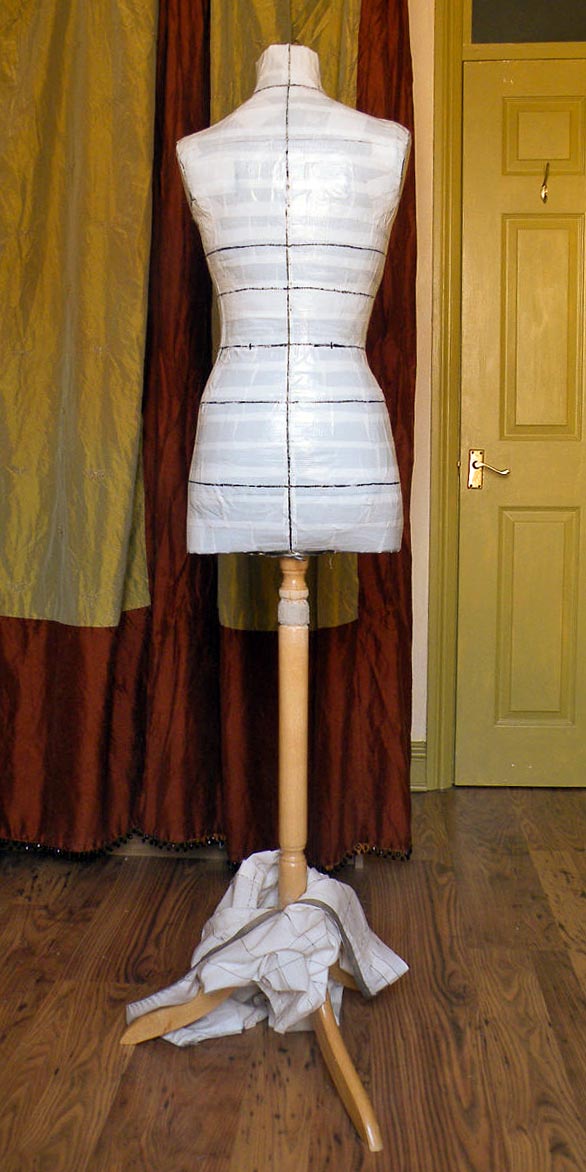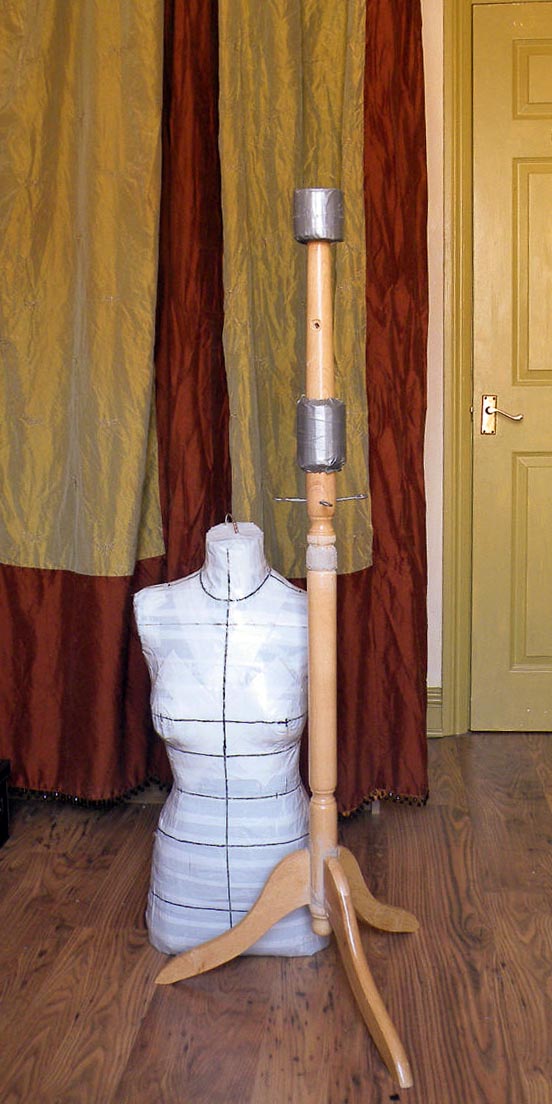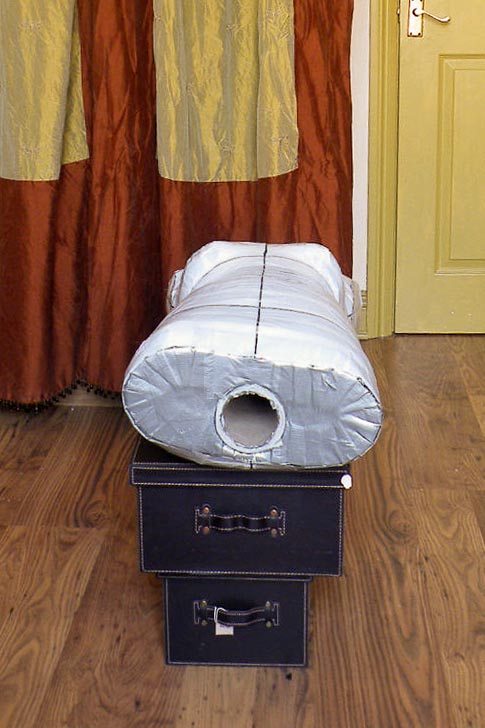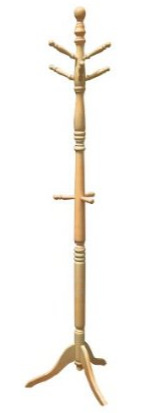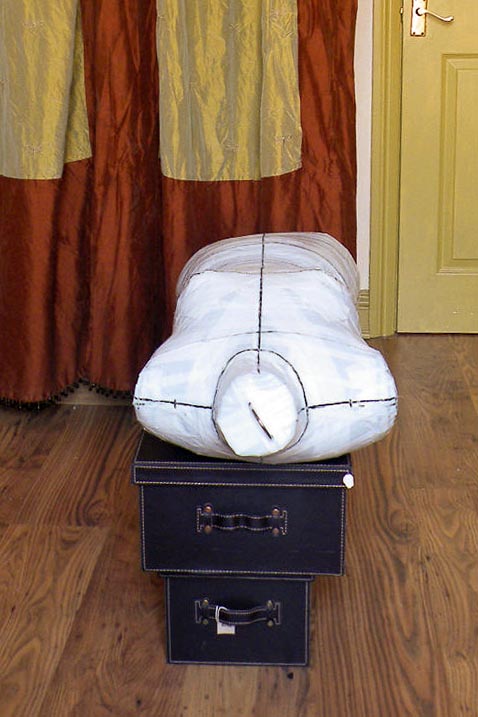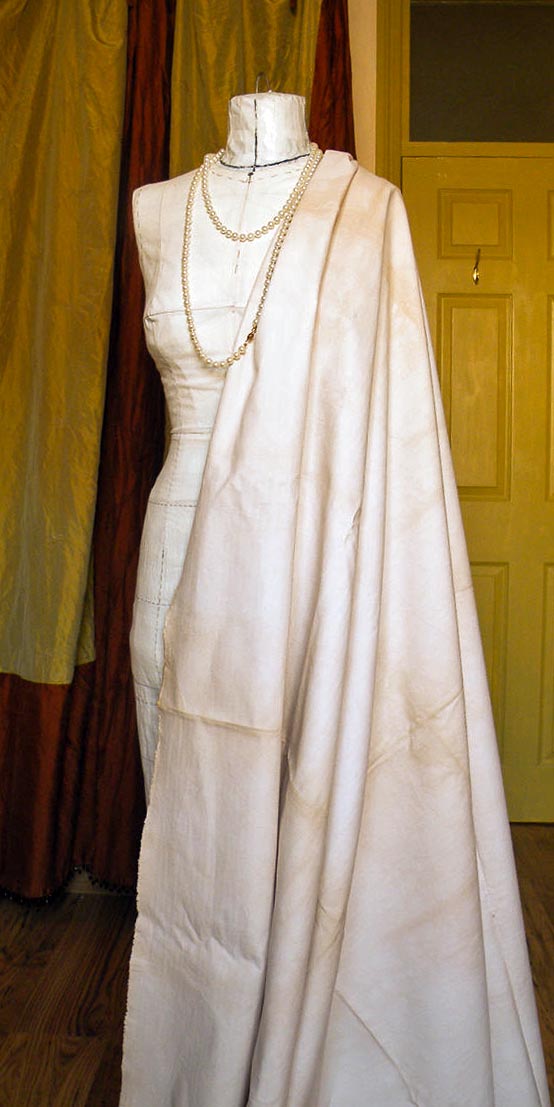So, with new bra sorted, I finally got started on my new custom dress form. I haven’t settled on a name for her yet, so for now let’s just call her Darling Judy, or DJ for short.
Big Bertha, my last one, was a Duct Tape Double who became a bit lumpen over time, and was always too thick & sticky skinned to pin into. So this time around I’m trying a modified Paper Tape Double.
I’m using mostly Connie Crawford’s instruction, which is in her patternmaking book. There was a slightly more detailed version from Sew News Aug 2006, which sadly isn’t on their website anymore (I saved the pages a while back). You can try Web Archive, but the photo illustrations are all missing. She also has the dress form instruction on a DVD and there’s a sample clip on YouTube which I found quite useful.
Here’s DJ after she was cut off and re-joined:
Gosh I’m lopsided or what!
Anyway, a few tips & lessons that the instructions don’t mention:
- Here DJ has 4 layers of paper tape on the outside and 1 layer on the inside. The key measurements aren’t too far off. The waist and chest are about 1″ bigger than my smallest / exhale measurement. But I think that’s inevitable since you can’t exactly not breath while being wrapped. With these wrapped forms you’ll always get at least the breathing ease if not the full wearing ease. And that’s fine if you’re not using the form strictly for zero-ease garments like bustier.
- For wrappee comfort I’d recommend following Connie’s wrapping order, but mark the key lines as you go rather than leave it till you’re all wrapped up. So hem after the skirt part is wrapped, CB after the torso back’s wrapped, Side Seams & Armholes after the torso sides are wrapped, most of CF right before you close off the abdomen. This way, you get to breath for as long as possible! An experienced wrapper may be able to complete the wrapping & marking in an hour, but we took close to 3 hours to wrap and cut off. So that’s a long time of not breathing if you’re not careful about wrapping & marking order!
- I used as small a bin / trash liner as I could to keep unnecessary bulk down. But it wasn’t long enough. So I used cling-film to extend the length, as well as add the neck. If you do use multiple layers of cling-film, make sure you peel off the extra layers from the inside of the dress form before you reinforce the form from the inside with extra layers of paper tape. Otherwise you get air-bubbles between cling-film layers.
- I used self-adhesive paper packing tape as recommended by Connie since it’s less messy than gummed paper packaging tape which you have to moisten first. But I do plan on further reinforcing the form with multiple layers of the gummed tape from the inside, and maybe another layer on the outside. This is just in case the gummed type is stiffer / longer lasting / sticks better.
- Marking: it’s not really necessary to mark till you faint! All you really want is key lines to help get the form standing in the same way you do – ie not tilting to the front / back / left / right. So a level hem (parallel to the floor) is key. Level verticals (CF, CB, Side Seams) are also useful.
- Cutting: Be really careful! I’ve been cut once before. This time I got those blunt-tip bandage scissors and have my DOH go very slowly with the cutting. The built-in breathing ease came in handy here. I was able to exhale and press against the front of the form to yield a little bit of gap at the back princess cutting line so that the scissor wasn’t jabbing into my skin. You can also try Thread’s technique of including a narrow strip of heavy paper under bin / trash liner where the cutting line will be before wrapping. When cutting, the paper would be between the scissor and your skin, thus protecting you from its sharp points.
- Once you got your form off and reinforced it from the inside and taped on the cardboard pieces to cover the hem / AH / neck holes, you can sew a heavy muslin cover for it if you plan on pinning “into” the form. You will not be able to jab directly into the form – after a few layers the paper is really too stiff. So that much is the same as with Duct Tape Double. But at least you won’t be tempted and end up with gummed pins and bleeding fingers!
- The cover will need to be skin-tight. (Your Kenneth King Moulage comes in handy here if you’ve made one like me!) If you have any doubt about the accuracy of your new dress form, you should definitely fit the cover on yourself first, then adjust the dress form to fit your more accurate cover. You might have to slash & re-tape if your form is too big, or pad with wadding / batting if it’s too small.
As for DJ, see all those red shaded areas on her? That’s her reduction surgery plan. You see, stopping here would be too easy (!). I plan to torture myself by adapting some of Wolf Form’s professional dress form making process. She’ll be reduced in girth, then covered with wadding / batting, then maybe the old cotton jersey cover I made for Big Bertha but never used (if I can still find it), and finally the drill Moulage cover.
You see, I plan to gift myself a couple of glossy draping books for Birthday / Christmas. So I’d really like a form I can pin into.
Stay tuned to find out how she looks after her surgery!
